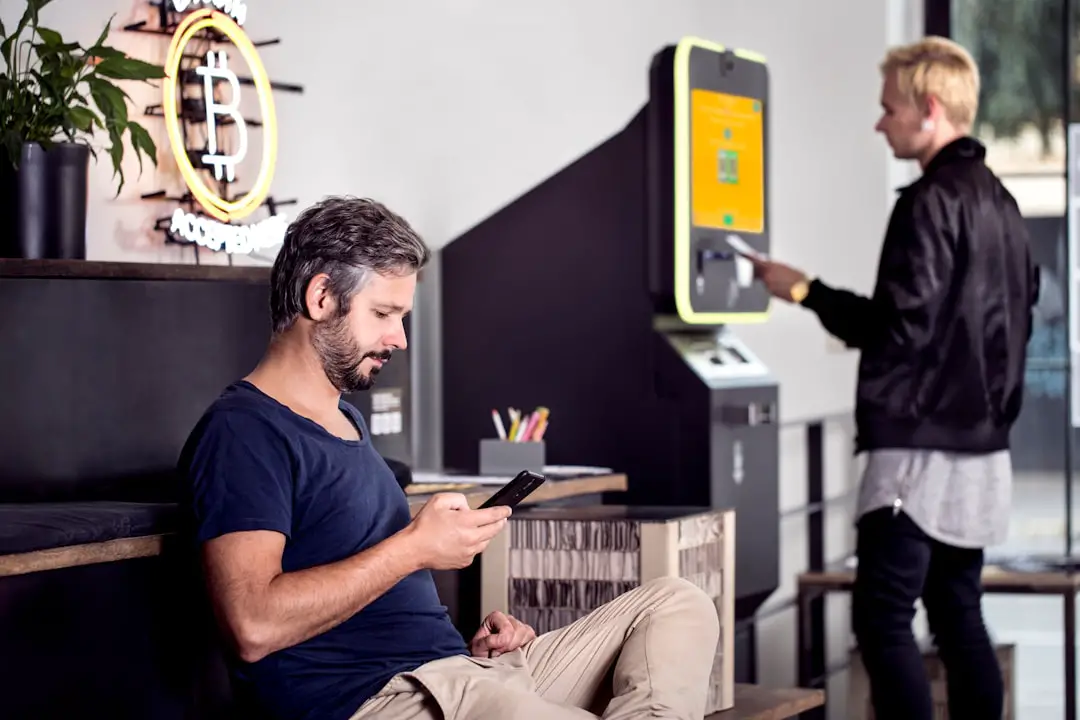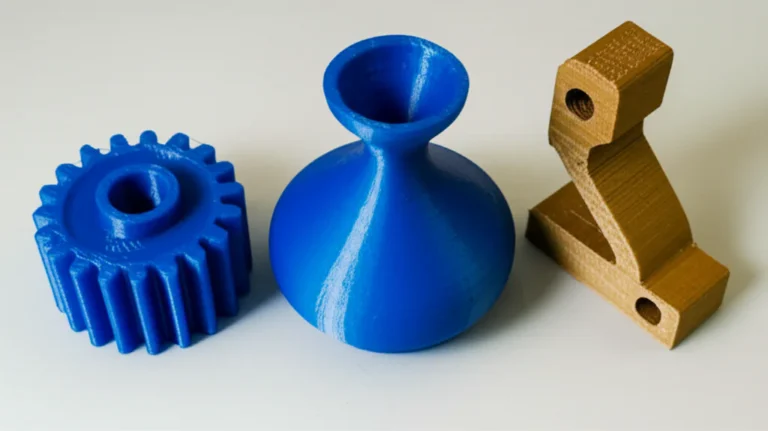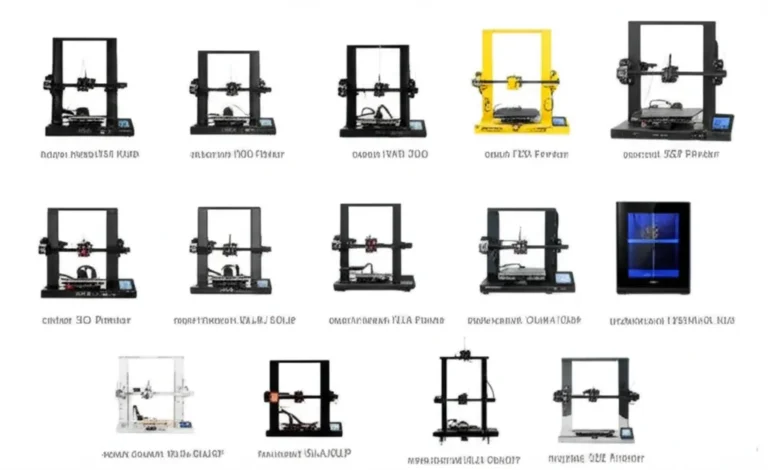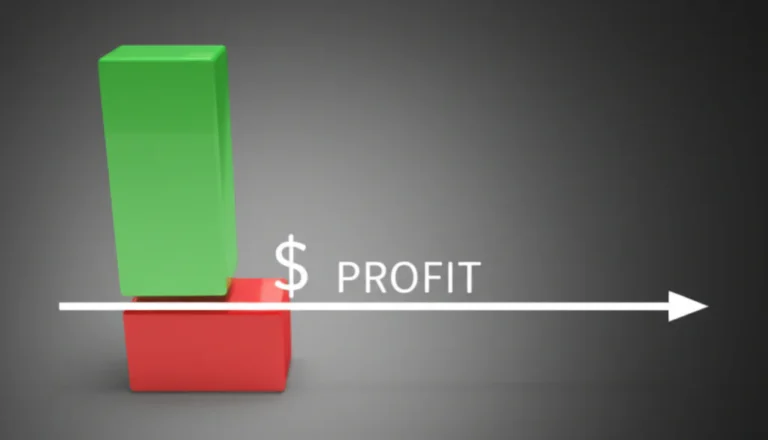Support our educational content for free when you purchase through links on our site. Learn more
7 Smart Ways to Rent Out Your 3D Printer in 2025 🚀

Imagine your 3D printer not just as a hobbyist’s gadget but as a steady income source, quietly earning money while you sleep. Sounds like a dream, right? Well, it’s closer to reality than you think! With the 3D printing market booming and more people eager to try printing without the upfront cost, renting out your 3D printer has become a savvy side hustle. But before you hand over your prized machine, there’s a lot to consider—from choosing the right printer to setting up rental agreements and finding customers.
Did you know the global 3D printing market is expected to top $34 billion by 2026? That means demand for accessible printing services is skyrocketing. In this comprehensive guide, we’ll walk you through 7 smart ways to rent out your 3D printer, share insider tips from the 3D Printed™ team, and help you avoid common pitfalls. Whether you want to dip your toes or build a full-fledged rental business, we’ve got you covered!
Key Takeaways
- Renting out your 3D printer can generate passive income but requires clear agreements, renter education, and maintenance.
- FDM printers like Creality Ender 3 and Prusa i3 MK3S+ are the best candidates for rentals due to ease of use and lower upkeep.
- Use platforms like Hubs and Fat Llama or local maker communities to find renters.
- Protect your investment with rental contracts, deposits, and insurance.
- Consider diversifying income by offering printing services, workshops, or selling your own designs.
- Excellent customer service and support turn renters into repeat clients and promoters.
- Scaling your rental business is possible with multiple printers and streamlined operations.
👉 Shop Popular 3D Printers for Rental:
- Creality Ender 3: Thingiverse | Amazon | Creality Official Website
- Prusa i3 MK3S+: Thingiverse | Prusa Official Website
- Anycubic Photon (Resin): Thingiverse | Amazon | Anycubic Official Website
Table of Contents
- ⚡️ Quick Tips and Facts
- The Rise of Home 3D Printing: A Brief History & Its Rental Potential
- Why Consider Renting Out Your 3D Printer? The Gig Economy & Your Maker Space!
- Is Renting Out Your 3D Printer a Viable Business Model? 🤔
- Understanding the Risks: What Could Go Wrong When Lending Your Precious Machine? 🚧
- 1. Choosing the Right 3D Printer for Rental Success: FDM, Resin, and Beyond!
- 2. Setting Up Your 3D Printer Rental Business: The Essential Steps
- Pricing Your 3D Printer Rental: Finding the Sweet Spot 💰
- Crafting a Bulletproof Rental Agreement & Terms of Service 📜
- Insurance for Your Precious Printer: Protecting Your Investment 🛡️
- Marketing Your 3D Printer Rental Service: Getting the Word Out! 📣
- Payment Processing & Financials: Keeping Your Books in Order 💳
- 3. Platforms for Renting Out Your 3D Printer: Where to Find Customers
- 4. Managing Your Rental Operations: From Booking to Return
- 5. Alternative Ways to Monetize Your 3D Printer (Beyond Direct Rental)
- Starting a 3D Printing Service Bureau: Print for Others! 🖨️
- Designing & Selling Your Own 3D Printed Products: Be a Creator! 🎨
- Offering 3D Printing Training & Workshops: Share Your Knowledge! 🎓
- Providing 3D Scanning Services: The Perfect Companion! 📸
- Prototyping Services for Businesses & Inventors: Innovate Together! 💡
- Consulting on 3D Printer Setup & Optimization: Your Expertise Pays! 🧠
- Creating a 3D Printing Blog or YouTube Channel: Content is King! ✍️
- Legal & Tax Considerations for Your 3D Printing Side Hustle ⚖️
- Customer Service Excellence: Making Your Renters Rave! ⭐
- Scaling Your 3D Printing Business: From One Printer to a Fleet! 📈
- Don’t Be Afraid to Experiment: The Future of 3D Printing is Yours! 🚀
- Conclusion: Your 3D Printer, Your New Income Stream! 🎉
- Recommended Links: Dive Deeper! 🔗
- FAQ: Your Burning Questions Answered 🔥
- Reference Links: Our Sources 📚
⚡️ Quick Tips and Facts
Ready to turn your 3D printer into a money-making machine? Here’s the skinny from your pals at 3D Printed™ before we dive deep:
- Renting out your 3D printer can generate passive income while you’re not printing your own projects.
- Platforms like Hubs and Fat Llama are popular marketplaces to list your printer for rent.
- Always use a rental agreement to protect your gear and set clear expectations.
- Insurance is a must — printers are delicate and costly to fix.
- Consider your printer’s type and capabilities; FDM printers are easier to rent out than resin ones due to maintenance and safety.
- Customer onboarding and support can make or break your rental reputation.
- Renting out your printer is just one way to monetize it — you can also offer printing services, workshops, or sell your own designs.
Want to know if this side hustle fits your lifestyle? Keep reading — we’ll unpack every detail, step-by-step, with real-world tips and anecdotes. And if you’re curious about how else to make money with a 3D printer, check out our detailed guide here: Can you make money with a 3D printer?.
The Rise of Home 3D Printing: A Brief History & Its Rental Potential
3D printing has exploded from industrial labs to your garage in just a couple of decades. The first affordable desktop 3D printers appeared around 2010, democratizing access to additive manufacturing. Brands like Prusa Research, Creality, and Ultimaker made it easier than ever to own a printer capable of producing everything from prototypes to cosplay props.
But here’s the kicker: not everyone wants to buy a 3D printer. Some just want to print a one-off project or test a prototype without the upfront cost or learning curve. That’s where the idea of renting out your 3D printer comes in — a win-win for makers and casual users alike.
Fun fact: The global 3D printing market is expected to surpass $34 billion by 2026 (source: MarketsandMarkets), so the demand for accessible printing services is only growing.
Why Consider Renting Out Your 3D Printer? The Gig Economy & Your Maker Space!
We all know the gig economy is booming — and your 3D printer can be your ticket to joining the ranks of side hustlers making extra cash. Renting out your printer taps into several trends:
- Sharing economy: People prefer renting over buying expensive equipment they’ll rarely use.
- Local maker communities: Hobbyists and startups often need short-term access to printers.
- Sustainability: Sharing resources reduces waste and encourages reuse.
Plus, if you’re already passionate about 3D printing, why not let your printer pay its own bills? Our team at 3D Printed™ has seen printers earn steady income, especially when paired with excellent customer service and clear rental policies.
Is Renting Out Your 3D Printer a Viable Business Model? 🤔
Short answer: ✅ Yes, but with caveats.
Pros:
- Generates passive income when your printer would otherwise sit idle.
- Builds connections in the local maker scene.
- Can lead to other opportunities like printing commissions or workshops.
Cons:
- Printers require maintenance and can be damaged by inexperienced users.
- Managing bookings, payments, and support takes time and effort.
- Insurance and legal considerations can complicate things.
Our advice? Start small, test the waters, and see how much demand there is in your area or online. Renting out your printer is not a “set it and forget it” deal — it’s a mini business that needs care.
Understanding the Risks: What Could Go Wrong When Lending Your Precious Machine? 🚧
We’ve all heard horror stories about printers returned with broken parts or clogged nozzles. Here’s what to watch out for:
- Physical damage: Cracked frames, broken belts, or damaged extruders.
- Neglect: Users not cleaning or maintaining the printer properly.
- Misuse: Printing with unsupported filaments or ignoring safety protocols.
- Liability: Injuries or accidents during use.
Mitigate these risks by:
- Drafting a rental agreement that covers damages and liabilities.
- Providing clear instructions and training to renters.
- Requiring a security deposit or insurance.
- Performing pre- and post-rental inspections.
Remember, your printer is an investment — treat the rental like a rental car business, not a casual favor.
1. Choosing the Right 3D Printer for Rental Success: FDM, Resin, and Beyond!
Not all 3D printers are created equal when it comes to renting out. Here’s a quick rating table for popular types based on ease of use, maintenance, print quality, and rental appeal (scale 1-10):
| Printer Type | Ease of Use | Maintenance | Print Quality | Rental Appeal | Notes |
|---|---|---|---|---|---|
| FDM (e.g., Creality Ender 3) | 8 | 7 | 7 | 9 | Most popular, versatile, affordable |
| Resin (e.g., Anycubic Photon) | 5 | 4 | 9 | 6 | High detail but messy and toxic |
| SLA (e.g., Formlabs Form 3) | 4 | 5 | 10 | 5 | Professional quality, expensive |
| SLS (industrial) | 2 | 3 | 10 | 2 | Not practical for home rental |
Why FDM? It’s the most renter-friendly: easy to operate, relatively forgiving, and uses safe materials like PLA. Resin printers offer stunning detail but require post-processing and safety precautions that renters may not want to handle.
2. Setting Up Your 3D Printer Rental Business: The Essential Steps
Ready to launch? Here’s your step-by-step blueprint:
Pricing Your 3D Printer Rental: Finding the Sweet Spot 💰
- Research local and online rental rates (typically hourly or daily).
- Factor in your printer’s depreciation, maintenance, and electricity costs.
- Offer discounts for longer rentals or repeat customers.
- Consider charging extra for filament or materials.
Crafting a Bulletproof Rental Agreement & Terms of Service 📜
- Define rental period, fees, and deposit.
- Outline renter responsibilities and prohibited uses.
- Include damage and liability clauses.
- Specify cleaning and maintenance expectations.
- Get it signed before handing over the printer.
Insurance for Your Precious Printer: Protecting Your Investment 🛡️
- Check if your homeowner’s or renter’s insurance covers equipment rental.
- Consider specialized insurance policies for equipment rental businesses.
- Some platforms offer insurance coverage for rentals — explore options.
Marketing Your 3D Printer Rental Service: Getting the Word Out! 📣
- List your printer on rental platforms like Hubs and Fat Llama.
- Use social media groups and local maker spaces.
- Create flyers for community boards.
- Share your story and photos to build trust.
Payment Processing & Financials: Keeping Your Books in Order 💳
- Use secure payment gateways like PayPal or Stripe.
- Track income and expenses for tax purposes.
- Consider invoicing software to stay organized.
3. Platforms for Renting Out Your 3D Printer: Where to Find Customers
Local Community Boards & Social Media Groups: Hyper-Local Reach 🏘️
- Facebook groups like “3D Printing Enthusiasts” or local maker communities.
- Craigslist or Nextdoor for neighborhood rentals.
- Maker spaces and libraries that might partner with you.
General Rental Marketplaces: Expanding Your Horizons (e.g., Fat Llama) 🌐
- Fat Llama is a popular peer-to-peer rental platform with insurance options.
- Hubs (formerly 3D Hubs) connects you with local print jobs and rentals.
- Fiverr can be used to offer 3D printing services or rentals, though it’s less common for hardware.
Building Your Own Rental Website: Taking Full Control 💻
- Use platforms like Wix, Squarespace, or WordPress with booking plugins.
- Showcase your printer specs, rental terms, and customer testimonials.
- Integrate payment and calendar systems for smooth bookings.
4. Managing Your Rental Operations: From Booking to Return
Pre-Rental Checklist: Ensuring Your Printer is Ready for Action ✅
- Clean the print bed and nozzle.
- Check filament levels and quality.
- Calibrate the printer and run a test print.
- Inspect for wear or damage.
Onboarding Your Renters: Tips for a Smooth Handover & Training 👋
- Provide a quick tutorial or printed manual.
- Explain safety precautions, especially for resin printers.
- Share troubleshooting tips and contact info.
- Set expectations for print quality and usage.
Troubleshooting & Support During the Rental Period: Being a Hero 🛠️
- Be available for questions via phone or chat.
- Offer remote assistance or quick fixes.
- Have spare parts ready for common issues.
Post-Rental Inspection & Maintenance: Keeping Your Machine Happy & Healthy 🧼
- Inspect for damage or excessive wear.
- Clean thoroughly, including removing leftover filament.
- Lubricate moving parts and check belts.
- Log maintenance activities.
5. Alternative Ways to Monetize Your 3D Printer (Beyond Direct Rental)
If renting sounds like too much hassle, or you want to diversify your income streams, consider these options:
Starting a 3D Printing Service Bureau: Print for Others! 🖨️
- Accept print jobs from local businesses or hobbyists.
- Use platforms like Hubs or Etsy to advertise your services.
- Specialize in prototyping, cosplay, or custom parts.
Designing & Selling Your Own 3D Printed Products: Be a Creator! 🎨
- Create unique designs and sell physical prints or digital files.
- Use marketplaces like Thingiverse, MyMiniFactory, or Cults3D.
- Popular items include jewelry, home decor, and gadgets.
Offering 3D Printing Training & Workshops: Share Your Knowledge! 🎓
- Host beginner classes at local community centers or online.
- Teach design software basics or printer maintenance.
- Build a loyal community and potential customers.
Providing 3D Scanning Services: The Perfect Companion! 📸
- Use 3D scanners to digitize objects for printing or design.
- Partner with artists, engineers, or educators.
- Combine scanning and printing for custom solutions.
Prototyping Services for Businesses & Inventors: Innovate Together! 💡
- Help startups and inventors turn ideas into physical models.
- Offer rapid iteration and design feedback.
- Build long-term client relationships.
Consulting on 3D Printer Setup & Optimization: Your Expertise Pays! 🧠
- Advise new owners on printer selection, setup, and troubleshooting.
- Provide custom tuning for print quality and speed.
- Offer remote or in-person support.
Creating a 3D Printing Blog or YouTube Channel: Content is King! ✍️
- Share your experiences, tutorials, and reviews.
- Monetize with ads, sponsorships, or affiliate links.
- Build a community of enthusiasts and potential customers.
Legal & Tax Considerations for Your 3D Printing Side Hustle ⚖️
Before you start renting or selling, make sure you:
- Register your business if required by local laws.
- Understand sales tax or VAT obligations on rentals or sales.
- Keep detailed records of income and expenses.
- Consult a tax professional about deductions related to your printer.
- Review liability laws and consider waivers or insurance.
Customer Service Excellence: Making Your Renters Rave! ⭐
Great customer service can turn one-time renters into repeat clients:
- Respond promptly and politely to inquiries.
- Provide clear instructions and support.
- Be flexible with pickup and return times when possible.
- Ask for feedback and act on it.
- Offer loyalty discounts or referral bonuses.
Our team’s experience shows that happy renters become your best promoters!
Scaling Your 3D Printing Business: From One Printer to a Fleet! 📈
Once you’ve nailed the rental or service model, consider:
- Adding more printers to handle demand.
- Diversifying printer types for different applications.
- Hiring help for maintenance and customer support.
- Partnering with local businesses or schools.
- Automating bookings and payments with software.
Scaling takes investment and planning but can turn your side hustle into a full-time gig.
Don’t Be Afraid to Experiment: The Future of 3D Printing is Yours! 🚀
3D printing is a playground for innovation. Whether you rent out your printer, start a service, or create content, keep experimenting:
- Try new materials like flexible TPU or carbon fiber composites.
- Explore multi-material or multi-color printing.
- Combine 3D printing with CNC or laser cutting.
- Join maker fairs and online communities for fresh ideas.
As we always say at 3D Printed™, the best way to learn is by doing — so dive in, make mistakes, and watch your 3D printing passion pay off!
Conclusion: Your 3D Printer, Your New Income Stream! 🎉
So, here’s the bottom line from your 3D Printed™ crew: renting out your 3D printer is a promising way to monetize your passion and equipment — but it’s not a passive “set it and forget it” gig. It requires careful planning, clear agreements, and excellent customer service to protect your investment and keep renters happy.
If you own a reliable, user-friendly FDM printer like the Creality Ender 3 or a Prusa i3 MK3S+, you’re in a great position to attract renters. Resin printers, while offering stunning detail, come with more maintenance and safety challenges that might limit your rental pool.
Remember the risks we talked about? Damage, misuse, and liability are real, but manageable with the right contracts, insurance, and renter education. Plus, renting out your printer can open doors to other income streams like printing services, workshops, or even content creation.
By now, you’ve got a comprehensive roadmap to start your rental business, find customers, and scale up if you want. So why wait? Your 3D printer isn’t just a hobby tool — it’s a potential income generator waiting to be unleashed!
Recommended Links: Dive Deeper! 🔗
CHECK PRICE on Popular 3D Printers for Rental:
- Creality Ender 3: Thingiverse | Amazon | Creality Official Website
- Prusa i3 MK3S+: Thingiverse | Prusa Official Website
- Anycubic Photon (Resin): Thingiverse | Amazon | Anycubic Official Website
Rental Platforms & Marketplaces:
Books to Boost Your 3D Printing Hustle:
- 3D Printing Failures: How to Diagnose and Repair All 3D Printing Problems by Sean Aranda — Amazon Link
- 3D Printing Business: How to Start and Run a Successful 3D Printing Business by Michael J. Thompson — Amazon Link
- Make: 3D Printing: The Essential Guide to 3D Printers by Anna Kaziunas France — Amazon Link
FAQ: Your Burning Questions Answered 🔥
How much can I earn by renting out my 3D printer?
Earnings vary widely depending on your printer’s type, rental rates, demand, and how often it’s rented. On average, hobbyist printers like the Creality Ender 3 can rent for around $15–$30 per day. If rented consistently, this can add up to a few hundred dollars per month. However, keep in mind maintenance costs and downtime. Platforms like Hubs can help you gauge local demand and pricing.
What are the benefits of renting out my 3D printer to others?
- Monetize idle time: Your printer works for you even when you’re not printing.
- Build community connections: Meet local makers, startups, and creatives.
- Expand your skills: Teaching renters and troubleshooting builds your expertise.
- Diversify income: Renting complements other 3D printing ventures like services or product sales.
How do I find people who want to rent my 3D printer for their projects?
Start locally with community boards, Facebook groups, and maker spaces. Then expand to online rental marketplaces like Fat Llama and Hubs. Creating a website or social media presence showcasing your printer’s specs and rental terms helps build trust. Don’t underestimate word-of-mouth — happy renters often bring referrals!
What are the legal considerations I need to be aware of before renting out my 3D printer?
- Rental agreements: Clearly outline responsibilities, fees, and liabilities.
- Insurance: Check if your homeowner’s or renter’s insurance covers rentals or get specialized coverage.
- Business registration: Depending on your location, you may need to register as a business.
- Taxes: Track income and expenses; consult a tax professional about reporting rental income.
- Liability waivers: Protect yourself from damages or injuries during rental use.
How do I protect my 3D printer from damage during rentals?
- Require a security deposit refundable upon safe return.
- Provide training and clear instructions to renters.
- Perform pre- and post-rental inspections to document condition.
- Use rental agreements that specify renter liability for damages.
Can I rent out resin 3D printers safely?
Resin printers like the Anycubic Photon offer high detail but involve toxic resins and post-processing with alcohol and UV curing. Renting these requires strict safety protocols, renter training, and possibly waivers. Many renters prefer the simplicity of FDM printers, so resin rentals may have a smaller market.
Reference Links: Our Sources 📚
- MarketsandMarkets: 3D Printing Market Forecast
- The UPS Store 3D Printing Services
- MakeUseOf: Ways to Make Money with a 3D Printer
- Fiverr: Let you rent my 3d printer to print your files for you by Quickqprints
- Creality Official Website
- Prusa Research Official Website
- Anycubic Official Website
- Hubs
- Fat Llama
Ready to turn your 3D printer into a cash cow? We hope this guide lights the way! For more tips on 3D printing innovations and printable objects, swing by our 3D Printable Objects and 3D Printing Innovations sections. Happy printing and renting! 🚀




